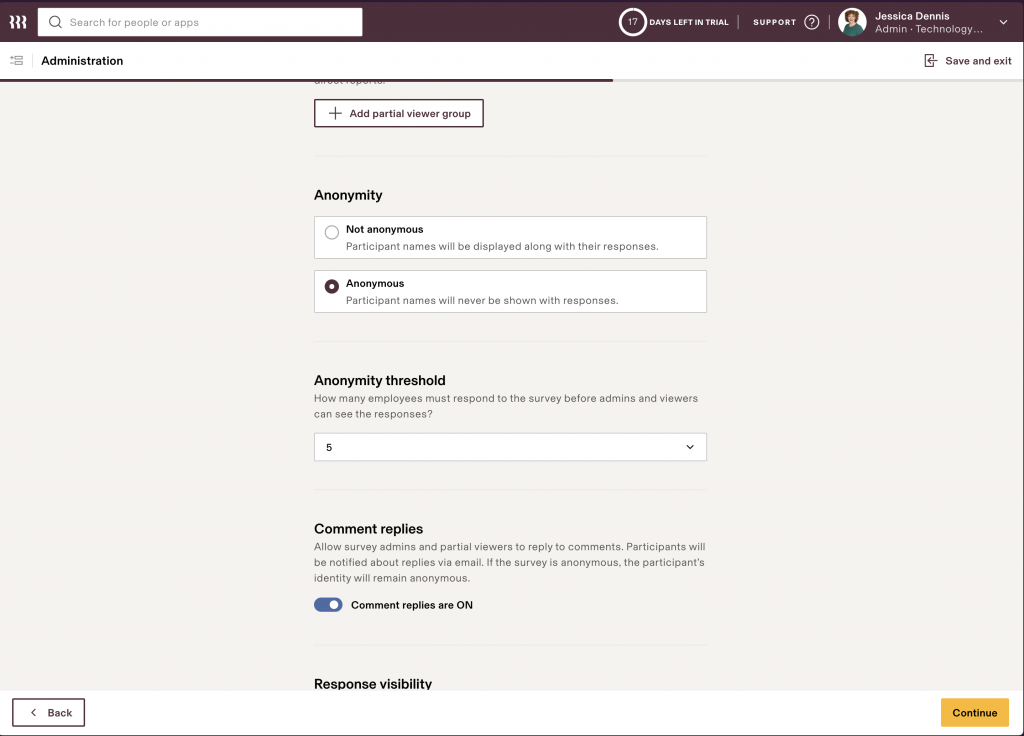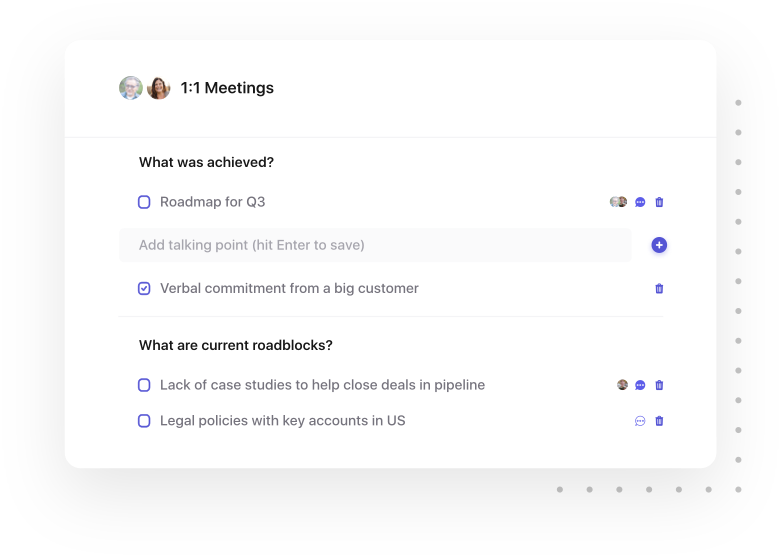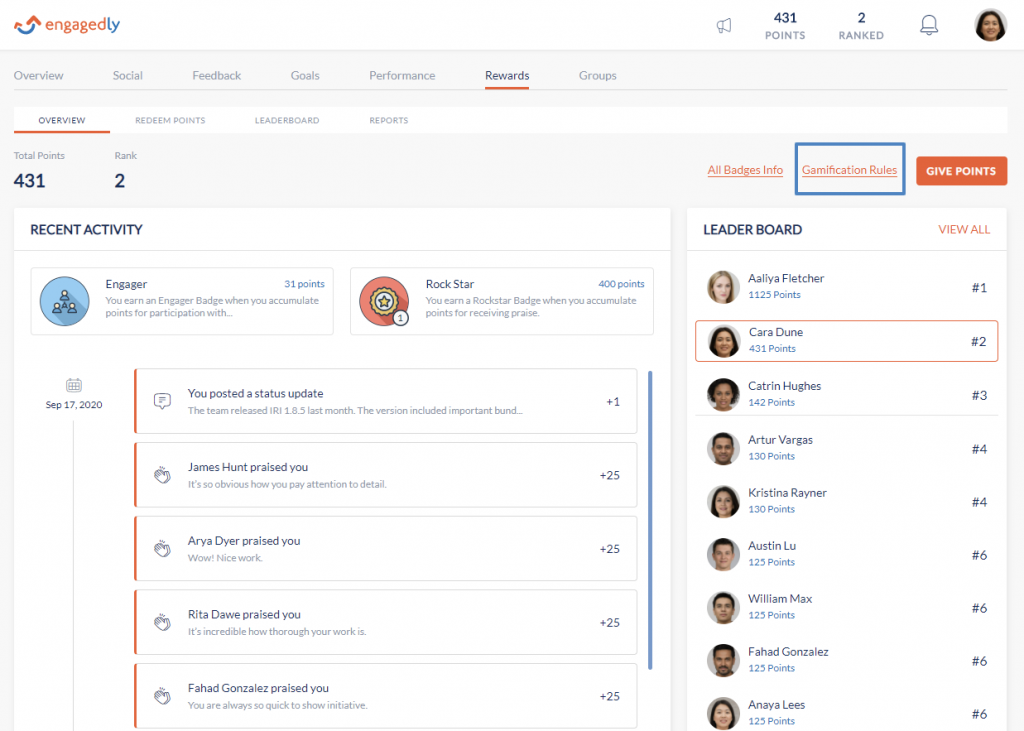Key takeaways
What are the signs of an unhappy employee?
Many factors could cause disgruntled employees. Some are organizational — they’re dissatisfied with the workload, the pay, or the company culture. Others are personal — their home life situation changed, or they have health concerns. And still others could be a mixture of both, resulting in employees feeling overwhelmed, unmotivated, and unsafe in their personal and professional spaces.
Although various influences contribute to an employee’s overall happiness at work, it’s the employer’s responsibility to look out for these warning signs and take action.
Learn about the warning signs of unhappy employees in our video overview below, or check out our Employee Engagement Software Guide for solutions to re-motivate disengaged employees.
1. Voicing concerns
The most direct indication that an employee is unhappy is when they approach their manager or an HR team member with a specific concern, whether it is regarding pay, mistreatment, lack of motivation, or personal issues affecting their work. Managers and HR teams should not push these concerns aside; in fact, in some cases, it’s illegal.
For instance, under Title VII of the Civil Rights Act and the Americans with Disabilities Act, employees effectively place their employers “on notice” if they express concerns about discrimination or the need for accommodation in the workplace. Employers should respond to employees’ concerns immediately to avoid expensive lawsuits for a perceived adverse action.
What employers can do
Pay attention and don’t swipe employees’ concerns under the rug. Managers should empathize with employees’ struggles and provide advice or tools to improve their working conditions. In some cases, managers, HR teams, and legal counsel should work together if the employee’s concern is serious, such as sexual harassment. Ignoring an employee’s concern could make the situation worse, resulting in the employee’s feelings of resentment and being gaslit.
2. Exhaustion
Everyone has had sleepy days at work, but it’s important to keep an eye on the employee who seems constantly exhausted. Whether this is the result of personal stress or heavy workloads, there is only so far these employees can go without inevitably becoming frustrated or burnt out.
What employers can do
Promote a healthy work-life balance. If possible, refrain from contacting employees during their off hours and provide flexible paid time off for employees to destress and recharge. Productive manager and employee conversations through continuous feedback could also address workload challenges before they become severe sources of energy depletion for the employee.
3. Work quality change
Suppose an ordinarily productive employee starts missing deadlines, procrastinates, or turns in subpar work. This may be a sign the employee is no longer motivated. Alternatively, if a normally slow and steady employee suddenly becomes more efficient or productive, this could indicate they are trying to tie up loose ends before leaving the company.
What employers can do
Provide plenty of opportunities for career development. Employees who are bored or unmotivated are unlikely to waste time or effort in a position they feel is not worthwhile. Instead, providing them with challenging yet achievable goals, training courses, or access to mentorship programs can re-motivate and re-engage disillusioned employees.
Leveraging performance management software can also help you build role bands to provide employees with clarity into potential career moves. Culture Amp, for example, can create employee development plans that lay out the goals and skills employees need to progress in their field.

4. Attitude change
Human personalities are complex and diverse, and just because someone is withdrawn or standoffish does not necessarily mean they are unhappy in their position. Instead, employers should be mindful of the employees whose work attitudes have gradually changed. For example, if an employee who typically contributes to meetings is suddenly quiet or is usually friendly with coworkers but is now irritable, there may be a problem.
What employers can do
Ensure there are resources available for employees with concerns. This may mean approaching the employee directly to offer help, appointing a work buddy, or having a formal complaint policy.
Reasons for an attitude change vary, from difficult home or health situations to frustration with workflow changes that spark emotional distress from past or present work trauma. Employees are more likely to be candid about their concerns if employers provide multiple ways to report problems, such as anonymous surveys, one-on-one meetings, or mental wellness programs.
Rippling’s Pulse module, for example, offers employee surveys with anonymity controls so employees can feel safe responding to sensitive questionnaires about workplace concerns.

5. Poor attendance
If an employee is suddenly frequently absent, asks for time off, is late, or leaves early, this may indicate the employee is uninterested in their current position or looking for another one. However, employers should ensure that increased absences are not for a legitimate reason. Disciplining employees for time off can negatively impact their rights to paid sick days in certain states or protected leave under the Family and Medical Leave Act (FMLA).
What employers can do
Get employees engaged in their positions again. This may mean implementing employee engagement surveys so employers can understand where they are falling short or gamified learning and development modules to keep employees invested in their career development. Employees are more likely to show up to work if they feel the work is stimulating and leads to possible career advancement.
For example, the learning management system (LMS) EdApp uses gamification, such as leaderboards, quizzes, and rewards to keep employee engaged.

6. Inappropriate behavior
An employee who suddenly starts conflicts with other employees, spreads rumors, or engages in other inappropriate behavior — like stealing company time, money, or equipment — is another indication of employee dissatisfaction with the company or coworkers. While certain behaviors may warrant discharge for cause, others are signs the employee feels either overwhelmed or directionless in their role.
What employers can do
Investigate the root of the cause. For more severe issues, managers and HR teams may have to gather witness statements and issue disciplinary warnings when necessary.
However, HR teams can take more strategic measures to address minor problems, such as a consistently negative attitude. For example, arranging one-on-one conversations between managers and employees to diagnose issues or redistributing responsibilities to reduce stress can improve employees’ comfort levels and refocus their energies on career success.
Leapsome, for instance, lets managers schedule one-on-one conversations to discuss performance, behaviors, or concerns regularly.

7. Major life event
Life happens and employers should be aware of how certain events affect their employees’ careers. For example, deaths, relocation, marriages and divorces, adoption, surrogacy, births, or health issues are significant events that shift an employee’s personal and financial priorities. After these events, employees may appear drained, distracted, stressed, or depressed.
What employers can do
Offer them the support they need. This may include offering employees adequate time away from work, flexible work hours, financial support, counseling, or work duty reevaluation. Employees are less inclined to leave after significant life events if their employers provide them the flexibility they need to succeed in their personal and professional lives.
How can HR software help address warning signs of unhappy employees?
HR software can help employers in their efforts to change unhappy employees into happy ones. With performance management, engagement, and learning management software solutions, companies can quickly pinpoint areas driving employee dissatisfaction.
For example, Qualtrics’ Discover XM is an employee sentiment analysis tool that reviews employee feedback surveys and external forums, social media, and employee review sites to determine what drives employee satisfaction. Employers can then focus on addressing the most pressing concerns of their employees, like compensation, benefits, or company culture, before they become serious issues. Similarly, Engagedly uses workforce gamification features, like earning badges, to motivate employees to learn new skills and progress in their careers.
Other elements, such as continuous and anonymous feedback cycles, recognition, and rewards, can improve employee satisfaction, while manager upskilling modules can train managers to be more empathetic to their employees’ needs and concerns. For companies concerned with employee retention, utilizing software to support and manage employee well-being may be the answer to creating a more productive and positive workplace.
Browse our Employee Engagement Software Guide to start improving the culture in your workplace.







